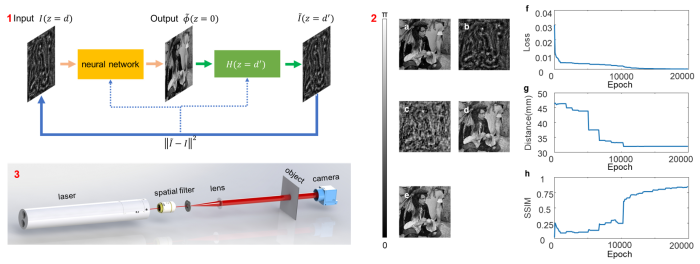Chinese researchers designed a new neural network learning architecture to solve uncertain computational imaging. This research is remarkable because computational imaging often needs to know the information of the forward physical model and the object prior, and an inaccurate physical model will affect the quality of reconstructed images.
In order to reduce the impact of model uncertainty, current research mainly focuses on Bayesian approximation methods or data-driven deep learning methods. Although these methods can reduce the uncertainty of the model, a large amount of data is needed to estimate the parameters of the physical system. Therefore, estimating model uncertainty under a small number of measurements is the focus of research in computational imaging. The research was led by Guohai Situ from the Shanghai Institute of Optics and Fine Mechanics (SIOM) of the Chinese Academy of Sciences. The related results were published in Journal of Physics D: Applied Physics on October 18, 2021.
The research team proposed a deep neural network method that does not require training to solve computational imaging problems with model uncertainty and successfully demonstrated it on the phase imaging platform. The diffraction pattern taken by the camera is the only input of the neural network, and then the network outputs the estimated phase of the object. The estimated phase is transmitted through a simulated free space for an estimated distance to obtain an estimated diffraction pattern. This pattern and the image were taken by the camera to do the error gradient descent, and the neural network parameters and transmission distance parameter are updated through back propagation algorithm.
Experiments show that this method can recover the phase and diffraction distance at the same time when the diffraction distance is unknown within a certain range, and the imaging quality and noise robustness are better than the current mainstream algorithm Gerchberg-Saxton. Researchers believe that this method can be widely used in computational imaging.

Fig.1 Experimental method framework. Fig.2 Phase and diffraction distance reconstruction process (a) Original phase object (b) Diffraction pattern (c-e) iteration steps at 900, 10300, 19800. Fig. 3 Phase imaging experimental device. (Image by SIOM)
Article website:
https://doi.org/10.1088/1361-6463/ac2ad4
Contact:
WU Xiufeng
General Administrative Office
Shanghai Institute of Optics and Fine Mechanics, CAS
Email: xfwu@siom.ac.cn
Web: http://english.siom.cas.cn/